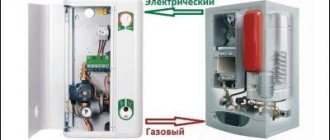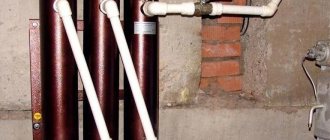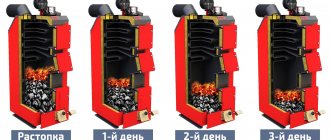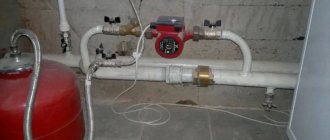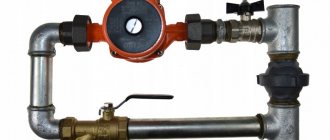Steam house
| Author | Jules Verne |
| original name | La Maison à vapeur |
| Illustrator | Leon Bennett |
| A country | France |
| Language | French |
| Series | Extraordinary Journeys #20 |
| Genre | Adventure novel |
| Publisher | Pierre-Jules Hetzel |
| Publication date | 1880 |
| Published in English | 1880 |
| Media type | Print (hardcover) |
| OCLC | 2653988 |
| Preceded | The troubles of the Chinese in China |
| Followed by | Eight hundred leagues on the Amazon |
Steam house
(French: La maison à vapeur) is an 1880 novel by Jules Verne that chronicles the travels of a group of British colonists to the Raj in a caravan pulled by a steam-powered mechanical elephant. Verne uses a mechanical house as a plot device to take the reader on a journey through nineteenth-century India. Descriptions are interspersed with historical information and social commentary.
The book is set in the aftermath of the 1857 Indian uprising against British rule, with passions and trauma still alive among Indians and the British. The alternative title by which the book was known, The End of Nana Sahib, refers to the appearance in the book of a historical figure - the rebel leader Nana Sahib - who disappeared after the suppression of the rebellion, his final fate unknown. Verne offers a fictional explanation for his disappearance.
Rules for choosing a material to solve a problem
When the cause of the pipe damage has been established, it is necessary to look for acceptable repair methods. There are several of them. Only most are suitable for low water pressure in the water supply circuit or heating system.
If you don’t have such a device at hand, then any piece of rubber (for example, from a bicycle inner tube) and wire or something similar will do .
But other methods of eliminating leaks when it comes to heating or hot water supply systems are unlikely to work. Thus, often used cold welding and special sealants are not relevant for wet surfaces.
Other instantly hardening composites (epoxy resin, dichloroethane) are also excluded, since they can be used on dry and disconnected water supply routes.
A minor leak in the pipeline can be repaired on your own . But this will only be a temporary measure. At the end of the heating season, it is recommended to carry out major repairs so that the system no longer fails.
Rating of the TOP 10 best steam mops of 2021
| TOP 5 best steam mops by price/quality for 2022 | ||
| 1 | STEAM Vileda | Find out the price |
| 2 | Ariete Steam Mop 4164 | Find out the price |
| 3 | Black+Decker FSMH13101SM | Find out the price |
| 4 | Kitfort KT-1006 | Find out the price |
| 5 | Tefal VP6557 | Find out the price |
| TOP 5 best inexpensive steam mops | ||
| 1 | ENDEVER Odyssey Q-606 | Find out the price |
| 2 | Scarlett SC-SM31B01 | Find out the price |
| 3 | Hotter HX-801 | Find out the price |
| 4 | Kitfort KT-1010 | Find out the price |
| 5 | Bradex Turbomax | Find out the price |
Hot and cold H2O - is there a difference in the way the gap is sealed?
It's all about the difference in coolant temperature. It is this factor that is decisive when choosing a material.
With hot pressure, minor damage can heal without outside intervention . Larger gaps can be easily repaired with regular salt and a bandage.
But when the water cools, the flow will resume. It will not be possible to fix a leak in a cold water pipe with salt and a bandage. It is easier to repair a failed hot water pipe in the summer when it is turned off. Then you don’t have to control the temperature in the room while fixing the leak.
Before the start of the season
Before the start of the season, it is necessary to regulate the system according to a certain algorithm. First, the valves at the heating system inlet are opened. Then water from the heating network is supplied to the pipelines - this happens with all equipment intended for heating.
When there is water inside the pipes, experts examine the lines for heating the lower sections of the risers. If any of the system elements gets very hot, the taps are closed. The main objective of the measures is to create the same temperature conditions for all risers operating within a particular system.
Following the risers, uniform heating must be ensured for heating equipment on each floor of the house. As in the previous case, taps in very hot areas are covered. The required temperature is controlled in the central section of the device section, which is furthest from the riser.
The study of the system is considered successful if the temperature conditions in the premises deviate from the specified value by 1-2 degrees. Otherwise, you need to carry out troubleshooting work.
When starting a system after a long period of inactivity, it may take a couple of days to a week to balance.
How does the pipeline material affect the solution to the problem?
Metal pipes are distinguished by their enviable resistance and durability. Almost their only drawback is their susceptibility to corrosion. This is often what causes a leak in the circuit.
Less commonly, other pipelines also fail: plastic, polypropylene (mainly in places of threaded or fitting connections).
It is enough to compress the plastic pipe in the problem area, and all manipulations can be carried out under water pressure. The main thing is not to overdo it with the screed, otherwise the plastic will crack, and then you will have to replace the entire pipe.
A polypropylene pipeline can be easily repaired by soldering a separate fragment; a metal-plastic pipeline requires inserts . In the latter case, if the damage is not extensive, wrapping with electrical tape or treating with an adhesive (polyurethane, epoxy) will be sufficient.
Assessing advantages and disadvantages
What are the benefits of a steam heating system? It is relatively easy to make even on the basis of a conventional wood stove. This is especially true in areas where there is no centralized gas supply, but firewood or other solid fuel is quite accessible.
Steam is significantly ahead of water as a coolant. Its heating rate is three times higher. In addition, a steam heating system is unlikely to fail during winter cold due to lack of heating.
If the firebox burns out, water from the system will collect in the storage tank or heat exchanger, and the pipes and radiators will remain empty. With water heating, freezing of the coolant, which fills the entire circuit, is known to lead to pipe rupture.
Finally, the dimensions of steam heating radiators should be significantly smaller than for water systems, since the amount of thermal energy obtained as a result increases several times. This will slightly reduce the cost of installing a heating system at home.
Decorative grilles for steam heating radiators are not only an element of interior design, but also a means of protection against burns
This concludes the list of advantages of the steam system, and we can move on to its disadvantages, which are quite significant:
- high risk of burns;
- increased noise level during operation;
- difficulties in adjusting the operation of the system;
- the need to purchase expensive pipes, etc.
Safety standards do not recommend steam heating for residential premises, as it poses a high risk to the health and life of people living in the house.
Thus, the operating temperature of the radiators will be very high, and if you touch them you can get a serious burn. Therefore, all radiators will have to be covered with reliable decorative grilles.
Ordinary PVC pipes are not suitable for such a system, since they must withstand high pressure and temperatures of more than 100 degrees. The same requirements apply to other elements of the system. Steam heating pipes must be copper or galvanized steel.
Copper pipes are an ideal, but not at all cheap, communication option for steam heating systems. To connect these pipes you will need a welding machine
In any case, this moment cannot be called budgetary.
Security issues must be given the utmost attention. All installation work, for example, welding copper pipes, will require the highest quality performance
If the connection ruptures and a stream of steam escapes through the hole, one of the occupants of the house risks serious burns.
Stainless steel pipes are able to withstand the loads typical of steam heating systems, such as high temperature and increased pressure in the system
Another disadvantage of steam heating is the increased noise level. To fix this problem, you must install the radiators correctly. They are suspended on special anti-noise brackets. It is best to place the boiler or stove in a separate room. In addition, copper pipes can be placed in the thickness of the walls, which will also reduce the noise level.
Finally, it is a little difficult to regulate the heating temperature in rooms with steam heating. You cannot install a thermostat and simply reduce the amount of steam. You will have to reduce the amount of fuel, which is not always easy, or ventilate the premises. Before starting work on installing a steam heating system, all these points should be taken into account.
How to solve a problem?
When water circulates under pressure in the pipes, most major repairs cannot be done. Therefore, you have to act in other available ways in order to at least temporarily stop the leak and wait for emergency services.
Using a self-tapping screw
This option is applicable only for minor holes with a diameter of no more than 3-4 mm .
To plug the hole, you need a galvanized self-tapping screw, which is additionally equipped with a press washer.
It is simply screwed into the hole and secured . As a result, the water is blocked. After such repairs, the pipe can last up to 3 years, but it is better to replace the burst fragment as soon as possible. In addition, a self-tapping screw inside the pipeline leads to clogging of the system.
Cementing
Cast iron or steel pipes can be easily patched using cementation.
The sequence of actions is as follows:
- Using a special hard metal brush, carefully remove the layer of rust in the area of the fistula. The metal that is being painted is also removed, even if this leads to an enlargement of the hole.
- Cut the bandage to a certain length and dip it in the cement solution.
- They wrap it around the crack in several passes to form a kind of cocoon.
- The top is coated with cement to secure the result.
Clamp
A clamp is a fairly simple design consisting of a metal ring, a rubber gasket and a tightening bolt.
This device is sold in stores, but in emergency situations you can quickly make it yourself. You will need a piece of plastic rubber, scissors and a metal clamp corresponding to the diameter of the pipe.
Further actions:
- clean the damaged area from rust;
- put on a clamp, and slip a rubber gasket under it;
- The coupling is pressed tightly.
If the pipe is very rusty, a clamp will be almost the only way to disguise the leak. This is because welding cannot be used here.
Bandage and table salt
Salt is ideal for sealing leaks in hot water pipes under pressure. Step-by-step instruction:
- Distribute digestive salt over the bandage in as large a layer as possible.
- Wrap it around the hole, preferably more tightly.
Sealant
Using sealant (also called “cold welding”) to eliminate leaks in existing pipelines is not productive, since there is no guarantee that the problem will be solved 100%.
This is due to the fact that such compositions are designed to work with dry surfaces , and condensate is present on pressure pipes.
But if there is a small crack, you can try to seal it with a heat-resistant sealant. Outwardly, it is similar to plasticine.
Break off a small piece, carefully crumple it with your fingers and insert it into the hole, followed by smearing it to the sides . Large holes cannot be masked this way; first you will need to insert a wooden chip.
Here you will need fiberglass fabric and BF-2 glue.
Step by step steps:
- the problem area is thoroughly cleaned of rusty particles and degreased with aviation gasoline (acetone is an alternative);
- wait 15 minutes until the surface dries;
- cut a tape from the fiberglass of such a width that it completely covers the area of the leak;
- an adhesive composition is applied along the edges, and epoxy resin is applied to the center;
- apply to the crack, press with your hand and wrap;
- fixed with copper wire.
Wire or harness
A method somewhat reminiscent of the one with a clamp . Only instead of it they take a medical tourniquet and any metal wire. Rubber is tightly wrapped around the damaged pipe fragment and tightened with wire.
Wooden chop
It is necessary to quickly plan a wedge-shaped peg of a suitable diameter from any piece of wood. Then they hammer it into the hole with a hammer.
Types of steam heating systems
According to the method of installation, steam heating is distinguished into two types: with a closed and open system. In a closed system, condensate flows into a special receiving pipe, which is connected to the corresponding inlet of the cat. It is laid with a slight slope, so that the condensate moves through the system by gravity.
Schemes of open and closed steam heating systems
In an open system, condensate is collected in a special container. When it is filled, it is fed into the boiler using a pump. In addition to different system designs, different steam boilers are also used - not all of them can operate in closed systems.
In general, there are steam heating systems with pressure close to atmospheric or even lower. Such systems are called vacuum-steam systems. What is so attractive about this setup? Because at low pressure the boiling point of water decreases and the system has a more acceptable temperature. But the difficulty in ensuring tightness - air is constantly sucked in through the connections - has led to the fact that these schemes are practically never encountered.
Steam heating with low pressure is more common. Existing steam boilers for domestic use can create a pressure of no higher than 6 atm (at a pressure of more than 7 atm, use of the equipment requires permission).
Wiring types
According to the type of wiring, steam heating is:
- With top wiring (the steam line is located under the ceiling, pipes go down from it to the radiators, and a condensate line is laid below). This scheme is the easiest to implement, since hot steam moves through one pipe, cooled condensate through another, the system is stable.
Scheme of steam heating with top wiring - With bottom wiring. The steam line is located at floor level. This scheme is not the best choice, since hot steam moves up through one pipe and condensate moves down, which often leads to water hammer and depressurization of the system.
- With intermediate wiring. The steam line is laid just above the radiators - approximately at the level of the window sills. The system has all the advantages of overhead wiring, except that hot pipes are within reach and there is a high risk of burns.
When laying, the steam pipeline is made with a slight slope (1-2%) in the direction of steam movement, and the condensate pipeline - in the direction of condensate movement.
Boiler selection
Steam boilers can operate on all types of fuel - gas, liquid and solid fuel. In addition to choosing fuel, it is necessary to correctly select the power of the steam boiler. It is determined depending on the area that needs to be heated:
- up to 200 m2 - 25 kW;
- from 200 m2 to 300 m2 - 30 kW;
- from 300 m2 to 600 m2 - 35-60 kW.
In general, the calculation method is standard - 1 kW of power is taken per 10 square meters. This rule is valid for houses with a ceiling height of 2.5-2.7 m. Next comes the choice of a specific model. When purchasing, check for a quality certificate - the equipment is dangerous and must be tested.
Which pipes to use
Only metals can normally withstand temperatures during steam heating. The cheapest option is steel. But welding is required to connect them. It is also possible to use threaded connections. This option is budget-friendly, but short-lived: steel quickly corrodes in a humid environment.
At least copper pipes don't corrode
Galvanized and stainless steel pipes are more durable, but their price is not at all modest. But the connection is threaded. Another option is copper pipes. They can only be soldered, they are expensive, but do not rust. Due to their higher thermal conductivity, they transfer heat even more efficiently. So this heating system will be super efficient, but also very hot.
How to stop a leak in a hidden pipe?
You won’t be particularly happy when a pipe hidden under a building structure starts leaking. Especially if the renovation has only recently been done. Since it is not always possible to quickly reach the source, you need to know how to temporarily stop the flow.
Here are a few techniques that are suitable for a water supply system in a private home:
In just a couple of hours, mustard will seal microcracks from inside the pipeline. When the leak is fixed, the circuit should be flushed.
- The heating system is temporarily filled with industrial sealant. It will settle on the internal surfaces of the pipeline and thereby stop water from seeping through microscopic gaps. After a major overhaul, the coolant is replaced with a new one.
Large holes cannot be sealed this way. Then they turn off the system, drain the water from the riser and begin straightening. Namely, it will be necessary to dismantle the structure and replace problematic spans. If you live in an apartment building, neighbors are warned about the upcoming event.
New life from scratch
You have to spend more than one day at home. Now the house is the center of the universe and, most likely, it needs to be taken care of. It is better to do this together, giving difficult tasks to your stronger half, and the beautiful part of the family to take care of the overall comfort and cleanliness.
Find old forgotten things, arrange a fun fashion show from 10 years ago, try to fit into prom or wedding suits, dismantle the balcony, organizing a mini-lounge area on it from scrap materials. Free the house from old and broken things, throw them away together - a new life lies ahead.
This is interesting! May holidays at sea - where to go
Preventing the problem from recurring
It is easier to prevent problems in the heating circuit than to suddenly look for ways to eliminate them. So before the start of the heating season, communications are checked by testing, especially focusing on dangerous areas.
These include:
- level spans;
- threaded connections and welds;
- zone of joining sections at radiators;
- places of implantation of heating equipment;
- near fittings;
- hard-to-reach areas.
First, everything is checked by eye, then with the circuit running.
Which company should you choose?
Steam mops are included in the product lines of the vast majority of household appliance manufacturers, however, when choosing this device, you should give preference to proven, reliable and well-known brands, such as:
- Russian manufacturer Kitfort , which produces reliable and high-quality household appliances at very affordable prices;
- European brands: Endever (Sweden) and Tefal (France) , specializing in the production of functional and environmentally friendly devices;
- Bradex, headquartered in Israel , is a company that invests a lot of effort in the constant improvement of its products.
Improving room heating
The speed of movement of the coolant can be increased with a circulation pump.
Quite often, property owners have to deal with insufficient levels of heating of premises in severe frosts.
You can increase the efficiency of your heating system by installing the following products:
- Centrifugal pump. It must be installed at the outlet by inserting into the feed.
- Copper pipes with better heat transfer.
- Electric or water heated floor.
In some cases, you should change the piping scheme, using a two-pipe option.
Work technology
If the house does not initially have a stove, then you first need to partially open the floors to place the foundation, lay the foundation, and cover it with roofing material.
The first row is laid on waterproofing. The following are placed in order, controlling the vertical with a level or plumb line. Fire-resistant wire is inserted at the door installation sites, tying the door contour.
The firebox is laid out according to the previously described technology.
The chimney is made of two layers. A metal pipe is installed as a base, and the outside is tied with thermal insulation. All that remains is to lay bricks around it, leaving space for the damper.
For safety, each connected radiator is equipped with shut-off valves and air release valves.
Mayevsky tap on the radiator
At the beginning of the heating system, a cooling reducer and pressure reducing valve are installed, and a condensate tank is mounted at a slight slope. The liquid from it will be directed to the heat exchanger. A circulation pump is installed in front of the furnace.

